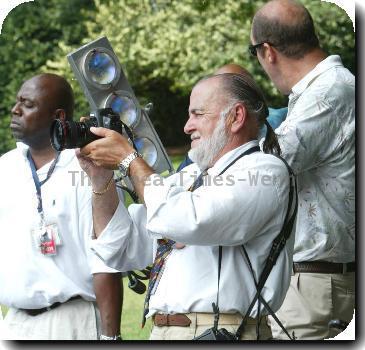Senators want specific destination for NASA, say with no moon mission it is going nowhere fast
By APWednesday, February 24, 2010
Senators to NASA chief: Go somewhere specific
WASHINGTON — NASA needs to go somewhere specific, not just talk about it, skeptical U.S. senators told the space agency chief Wednesday.
President Barack Obama’s proposed budget kills the previous administration’s return-to-the-moon mission, sometimes nicknamed “Apollo on steroids.” That leaves the space agency adrift without a goal or destination, senators and outside experts said at a Senate Commerce science and space subcommittee hearing, the first since Obama unveiled his new space plan this month.
On top of that the nation’s space shuttle fleet is only months away from long-planned retirement, an issue for senators from Florida, where NASA is a major employer. And while the new NASA plan includes extra money — $6 billion over five years — for private spaceships and developing new rocket technology, NASA shouldn’t be just about spending, the senators said. It should be about John F. Kennedy-like vision.
“Resources without vision is a waste of time and money,” Sen. David Vitter, R-La., said, calling the Obama space plan a “radical change of vision and approach.” He vowed to fight the plan “with every ounce of energy I have.”
And former chief astronaut Robert “Hoot” Gibson said the new plan “has no clear path, no destination, no milestones and no program focus.”
NASA Administrator Charles Bolden said after the hearing that critics were confusing the lack of a specific destination or timetable with the lack of a goal.
NASA has a goal, a big one, Bolden said. It’s going to Mars. But Bolden added that getting astronauts to Mars is more than a decade away and NASA needs to upgrade its technology or else it never will get there.
“We want to go to Mars,” Bolden said. “We can’t get there right now because we don’t have the technology to do it.”
That is why he said the new NASA plan invests in developing in-orbit fuel depots, inflatable spaceship parts, new types of propulsion and other technology.
Bolden would not even guess when NASA would try to send astronauts to Mars, but said the technology NASA is studying could cut the trip to the Red Planet from three months to a matter of days if it works.
“We’re oh-so-close, but we’ve got to invest in that technology,” Bolden testified.
Subcommittee Chairman Bill Nelson, D-Fla., seized on the Mars comment as a goal that could be embraced. But the other Florida senator, Republican George LeMieux, saw the Mars comment as too vague.
“I have great concern about saying we’ll get there someday and not knowing when it’s going to be,” LeMieux said.
Former Martin Marietta chief operating officer A. Thomas Young said he worried about “no expectation of any human exploration for decades.”
That’s not what’s in the NASA plan, countered Miles O’Brien, a former CNN anchor who now is on NASA’s Advisory Council. He said NASA’s new plans are more realistic than the ones that were just canceled, which he likened to a middle-aged former athlete “spending all his time talking about the glory days.”
The new NASA plans are more of “a grown-up approach to space exploration,” O’Brien said. But he said the problem was that NASA, once an agency known for its public relations skill, did “a horrible job” of communicating its new goals.
Vitter criticized NASA for ignoring a 157-page report by a special panel of outside experts, headed by former Lockheed Martin CEO Norman Augustine. But the “flexible path” of going to the moon, an asteroid or Martian moons next was first proposed by the Augustine panel. And it was the Augustine panel that called the previous plans unsustainable.
NASA’s new plans are “consistent with the options we laid out,” MIT astronautics professor and Augustine panel member Ed Crawley said in a Wednesday phone interview. And the path NASA chose is aligned with the options that were scored highest in the panel’s rating system, he said.
On the Net:
NASA: www.nasa.gov
Senate Commerce science and space subcommittee: commerce.senate.gov/public/index.cfm?p=ScienceandSpace
Augustine panel’s report: www.nasa.gov/pdf/396093main_HSF_Cmte_FinalReport.pdf
Tags: Astronomy, Barack Obama, Florida, Geography, North America, Planets, United States, Washington

